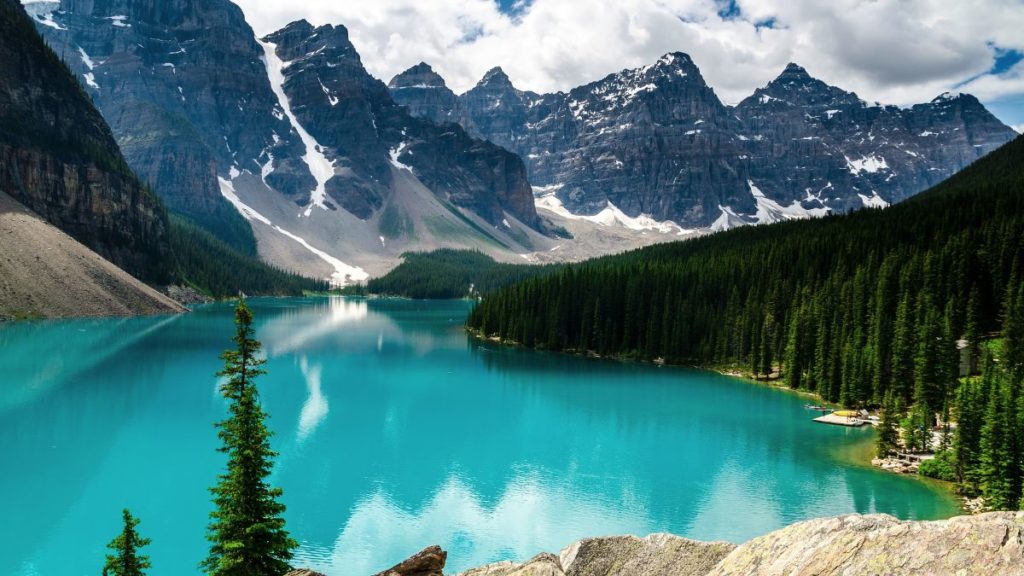
Giant Conifers to Deciduous Samplings
Other than the coastal and southern regions, trees of Canada and Alaska are limited by the Short summers and long harsh winters. However, don’t let that deter you in a decent variety to plant for your backyard birds.
Along the Pacific coast, there are still some rain forests where The green giants are huge. Spruce, pine and firs do well in the moderate temperatures.
The eastern portion of Canada offers many trees similar to that of the northeast and Great Lakes region of the United States. Temperatures moderate some as the terrain softens and the Great Lakes and Gulf Stream help to warm up the air a tad bit.
Besides the typical pines, pines and spruces of the boreal forests, native trees of Canada consist of maples, oaks, ash, willows, redbud, beech, aspen and other deciduous trees. All trees that offer food and protection for backyard birds and other wildlife.
Trees of Canada must include the Maple tree because that is the national symbol!
Sugar maple (Acer saccharum)
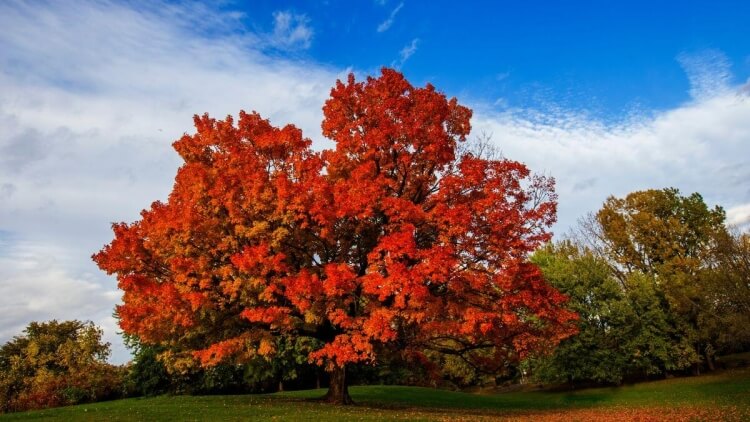
The tree that give us that nice syrup we covet for our pancakes and waffles.
- A slower growing tree to 100 feet, it is ideal for yards and landscapes.
- A thick canopy offer shade, protection, and seeds for backyard birds and squirrels.
- Sugar maples grow native through Ontario and neighboring provinces, through the northeast to Florida.
American beech (Fagus grandiflora)
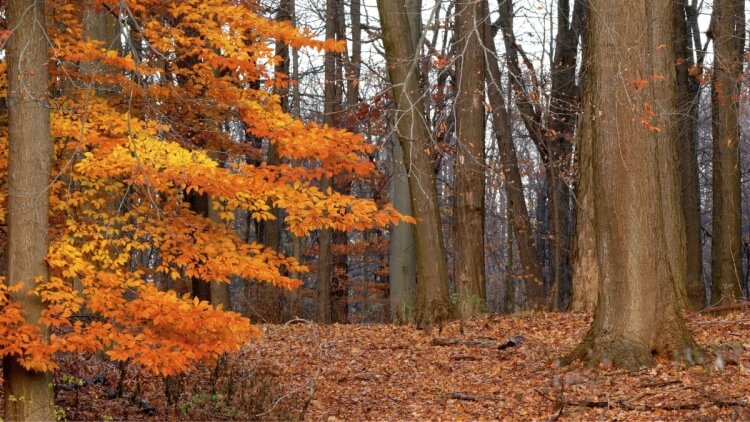
- Grows to 80 feet and produces edible nuts for people and wildlife.
- Backyard birds like nuthatches and woodpeckers find these nuts to be a real treat.
- A soft gray colored bark covers the tree even with age (it was the tree of choice for carving initials into as a boy) making it an ideal tree in the landscape.
- Nuts are covered by a prickly casing that splits open when the goodies inside are ripe.
Northern red oak (Quercus rubra) / Scarlet oak (Quercus coccinea) / White oak (Quercus alba)
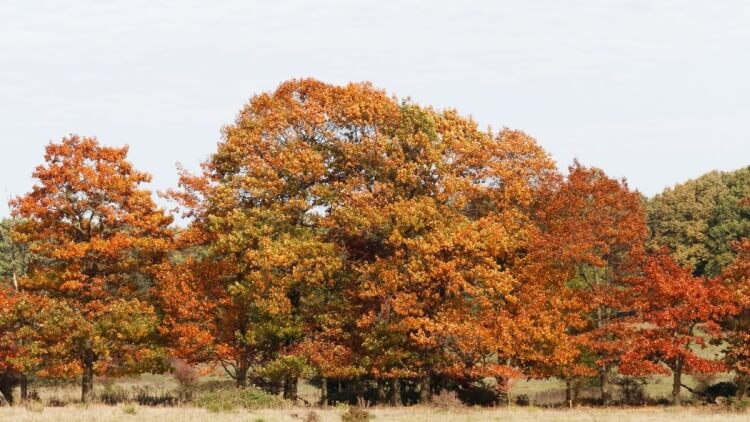
Native trees growing throughout Nova Scotia and Ontario.
- Oaks offer acorns for backyard birds and all sorts of wildlife.
- Trees are broad spreading and reach heights of 80 to 120 feet depending on species and growing conditions.
American hornbeam (Carpinus caroliniana)
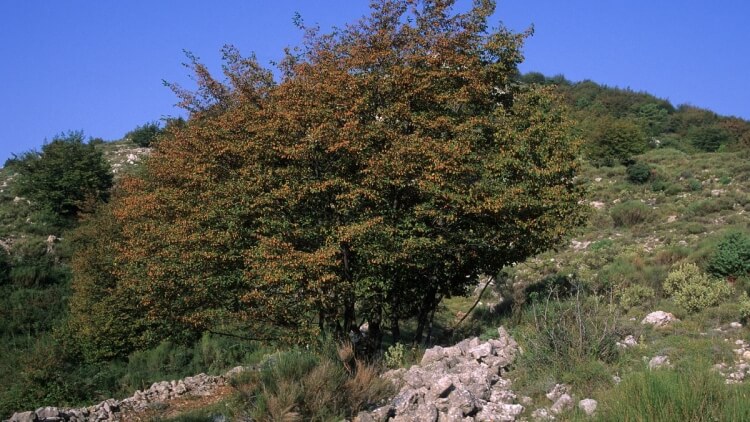
American hornbeam is native from Quebec and throughout Ontario.
- A small tree at around 35 feet when mature, with beautiful fall foliage.
- Fruits or nuts are in pendulous clusters attached by two or three bracts.
- It is an all around an attractive tree in the landscape and for backyard birds.
Black cottonwood (Populus trichocarpa) / Eastern cottonwood (Populus deltoides)

Yes, Canada is covered with various species of Cottonwood. From British Columbia to the Yukon Territory, from Labrador to Newfoundland, Cottonwoods are indeed trees of Canada.
- Both species can exceed 100 feet in height.
- Cottonwoods aren’t the ideal landscape tree, but do offer much for backyard birds and wildlife.
- If you don’t get enough snow during the winter, Cottonwoods will cover the ground with its cotton like seeds, giving the feel of snow all over again.
“Showy mountain ash” (Sorbus decora)
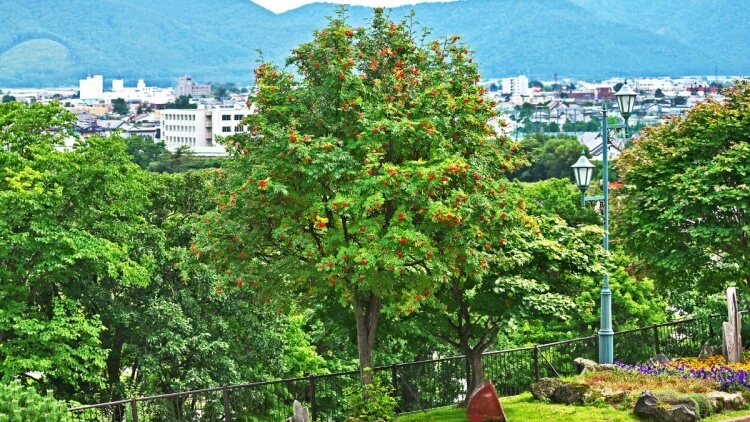
Found throughout much of northeast North America.
- A small native tree ideal for your gardens, it stands at 33 feet in height, and is
- Famous for its large bunches of red berries that makes it ideal for the landscape. The berries last well into winter adding color to the landscape if your backyard birds don’t eat them first.
Tamarack (Larix laricina) or the American larch
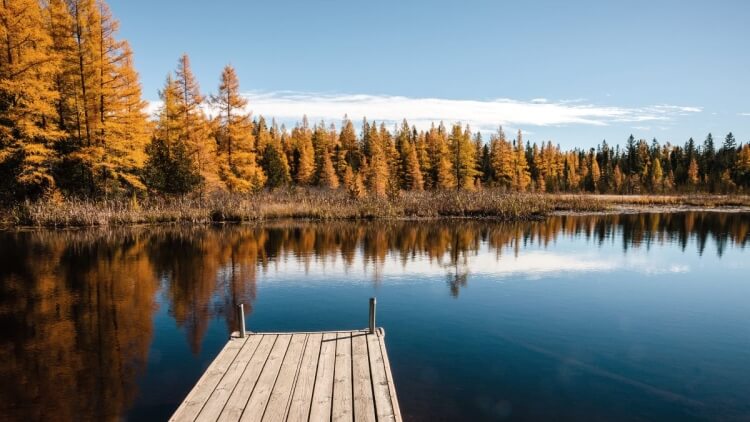
Tamaracks grow native throughout much of Canada in the northern United States.
- Larches are deciduous conifers if there is such a thing.
- During the summer months, they look much like and evergreen. Yet, when Autumn rolls around the needle turn yellow and drop off.
- They are a medium sized tree at 65 feet with a nice conical shape and ideal for your wildlife gardens
- Cones are less than one inch and offer food for backyard birds.
- When I think about Banff, Canada, I think of huge boreal forests.
White pine (Pinus strobus) / White spruce (Picea glauca) / Black spruce (Picea mariana)
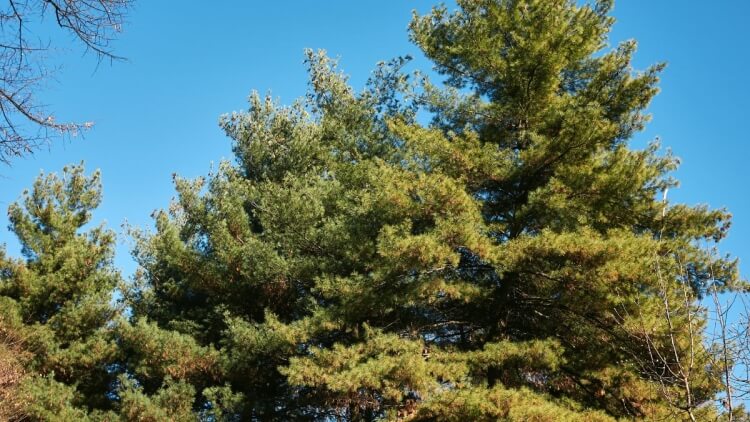
White pines are found in the eastern portion of Canada. Black and White spruce are found throughout Canada.
- These hardy trees survive the most grueling weather conditions where they survive in the subarctic tundra.
- The farther north they grow, the slower they grow because of the short growing season.
- Both trees reach 70 feet in height and offer 2 inch cones for seed eating birds like redpolls and red breasted nuthatches.
Downy hawthorn (Crategus mollis) / Cockspur hawthorn (Crategus crus-galli) / Prairie crab apple (Malus ioensis)
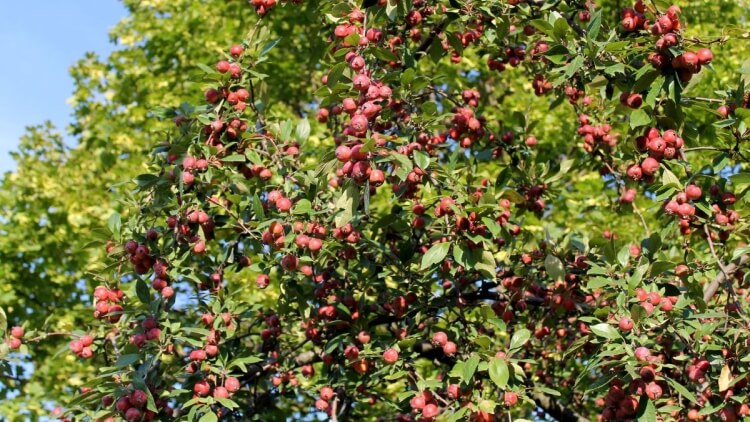
- These small to medium fruiting trees bare fruit well into winter supplying food for your fruit eating birds.
Like all the regions, there are too many trees to mention here. However it gives you an idea what native trees are available in your neck of the woods.
